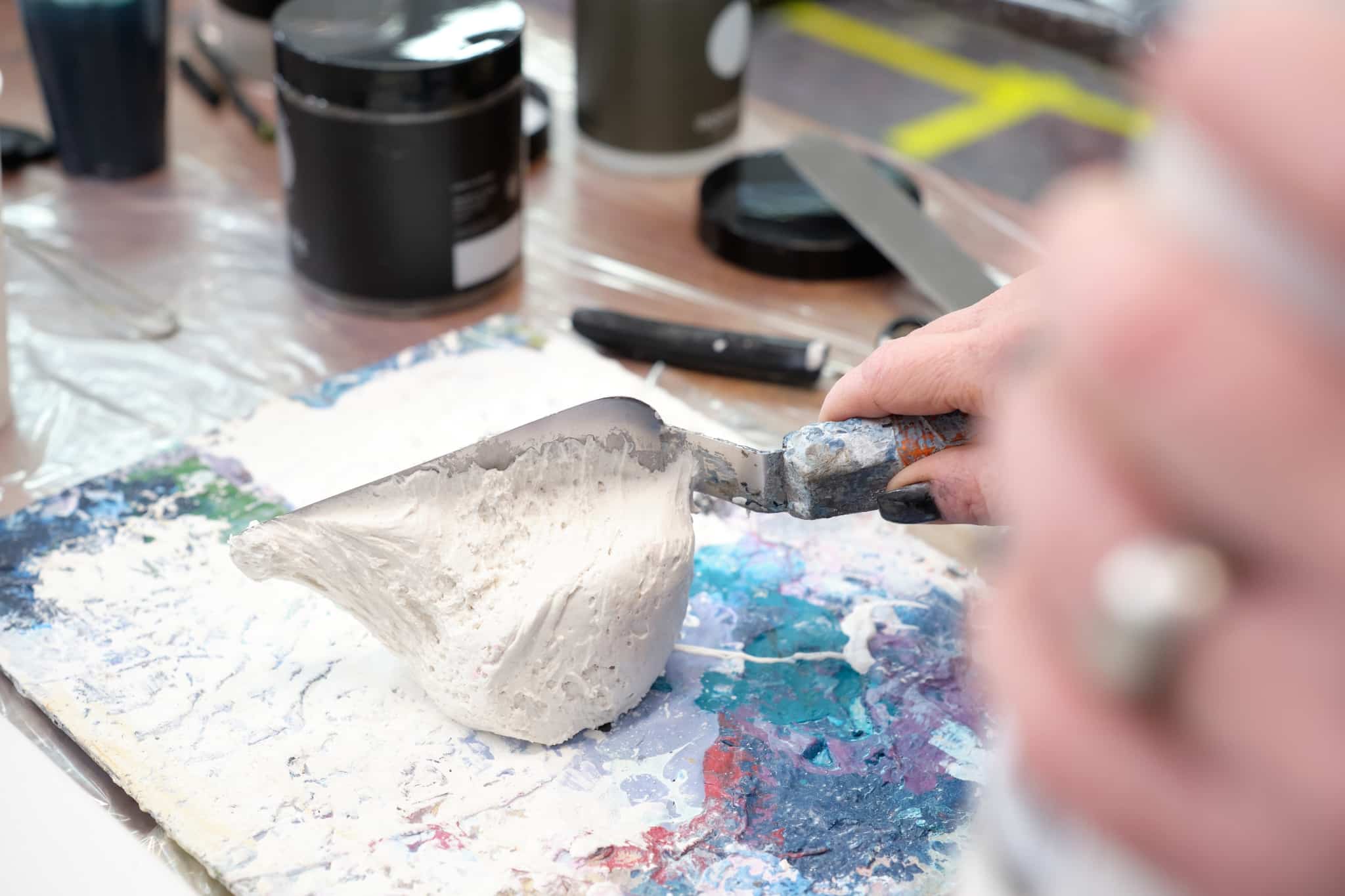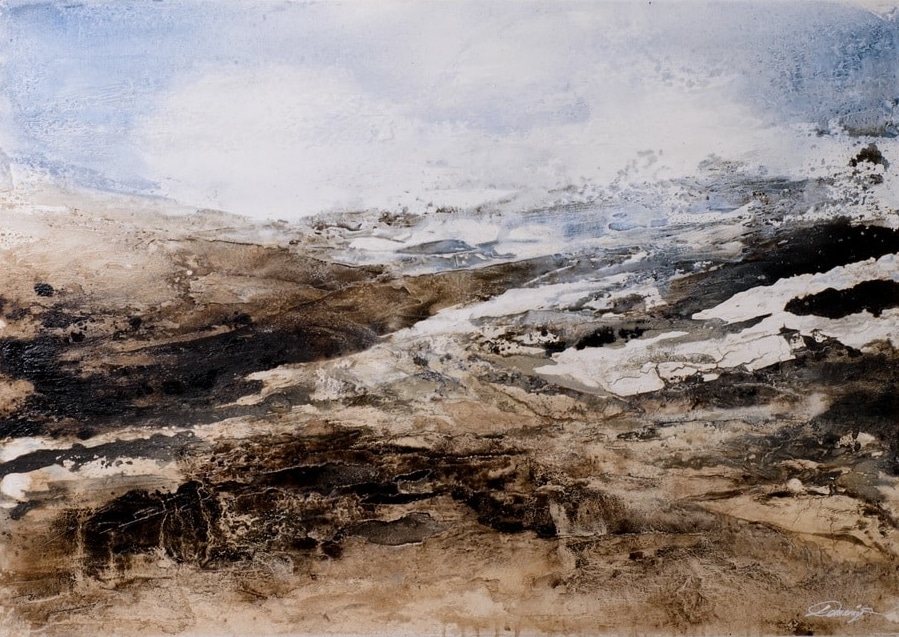putty

Our putty is used to create structures in artworks. This creates tension in the painting and a three-dimensional effect is created.
the special characteristics of our putty
The consistency resembles a smooth paste. It can be spread nicely, best with a spatula. You can remove it and move it again, so you can easily position it the way you want it on your artwork. After it dries, the surface retains its absorbent quality. With a slightly thicker layer, and exposure to heat, cracks will also sometimes appear on the surface. The surface is then further processed or painted with acrylic color, aquarylic color, pigments, and so on.
putty in combination with our fillers
If the putty has not yet dried, you can add fillers such as stone powder, iron filings, etc. The more unevenly you do this, the more exciting the result will be. Iron filings that are still visible after drying can also be oxidized afterwards.
putty in combination with aquarylic color and chalk color
Use a painting knife to spread very large areas of putty and chalk color white alternately on your still blank canvas. Use the materials generously and place the two materials partly next to each other and also on top of each other. Pay attention to the contrast of applying thinner and also thicker elements to your canvas. Allow the surface to dry for a maximum of 15 minutes. In the meantime, dilute the aquarylic color 1:1 with water in a cup. Simply mix the colors with a brush. Prepare a slightly stronger color and a slightly lighter color. Pour this color mixture generously onto your canvas. Pour the two colors next to each other.

TIP: pay attention to the composition of the painting
Now let the whole painting dry, without heat if possible. You can watch how the surfaces change. The still wet putty and the chalk color mix with the aquarylic color.
putty in combination with collages
You can use the putty to incorporate a wide variety of papers or other materials. This technique is especially popular for abstract design.